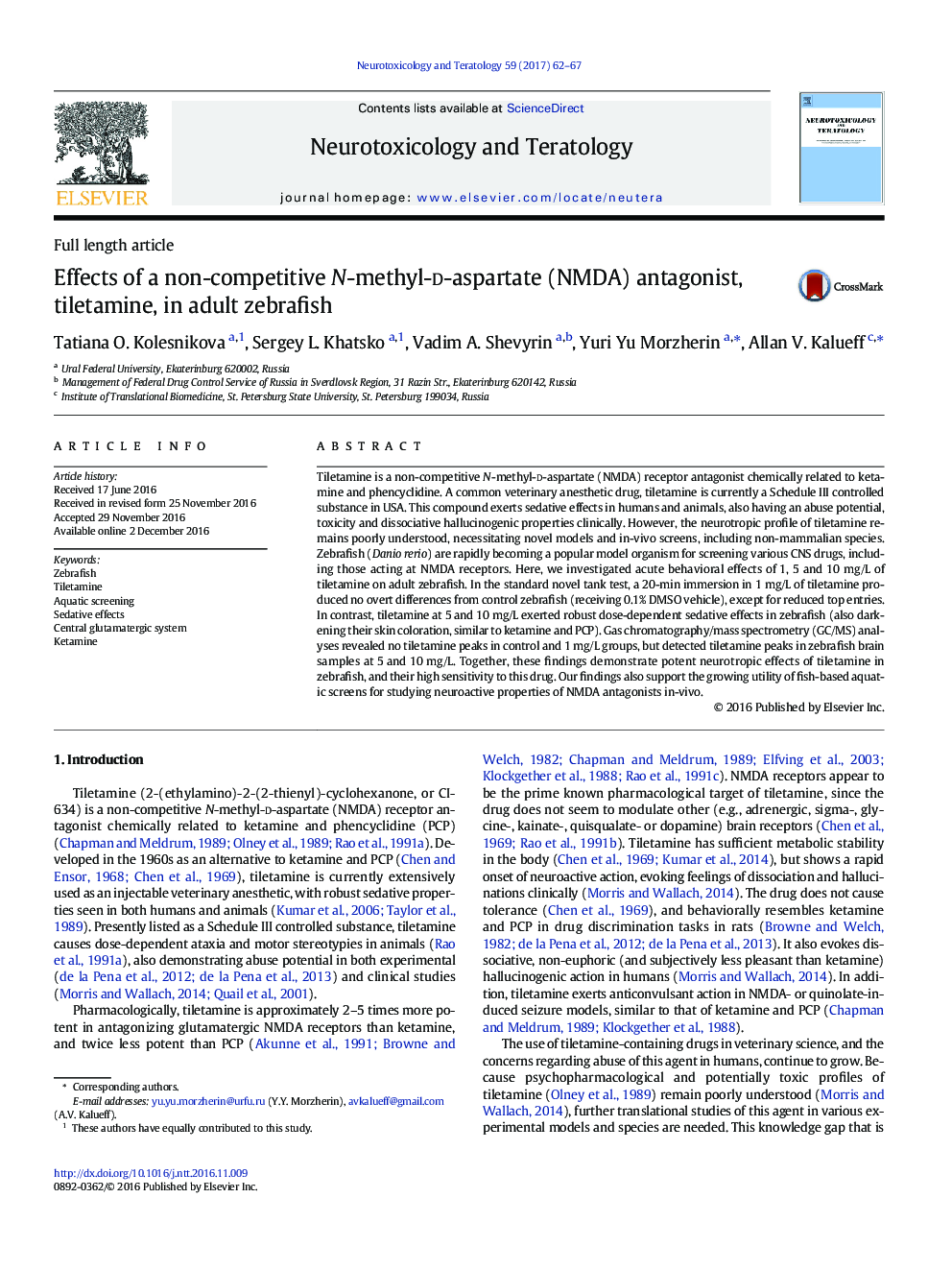| کد مقاله | کد نشریه | سال انتشار | مقاله انگلیسی | نسخه تمام متن |
|---|---|---|---|---|
| 5561040 | 1562077 | 2017 | 6 صفحه PDF | دانلود رایگان |

- Tiletamine is an NMDA receptor antagonist and a chemical analog of ketamine.
- CNS effects of tiletamine remain unclear, necessitating novel models and in-vivo screens.
- Zebrafish are a popular model organism for screening various neuroactive drugs.
- We investigated acute behavioral effects of 1, 5 and 10Â mg/L of tiletamine on adult zebrafish.
- Tiletamine at 5 and 10Â mg/L exerted robust dose-dependent sedative effects in zebrafish.
Tiletamine is a non-competitive N-methyl-d-aspartate (NMDA) receptor antagonist chemically related to ketamine and phencyclidine. A common veterinary anesthetic drug, tiletamine is currently a Schedule III controlled substance in USA. This compound exerts sedative effects in humans and animals, also having an abuse potential, toxicity and dissociative hallucinogenic properties clinically. However, the neurotropic profile of tiletamine remains poorly understood, necessitating novel models and in-vivo screens, including non-mammalian species. Zebrafish (Danio rerio) are rapidly becoming a popular model organism for screening various CNS drugs, including those acting at NMDA receptors. Here, we investigated acute behavioral effects of 1, 5 and 10Â mg/L of tiletamine on adult zebrafish. In the standard novel tank test, a 20-min immersion in 1Â mg/L of tiletamine produced no overt differences from control zebrafish (receiving 0.1% DMSO vehicle), except for reduced top entries. In contrast, tiletamine at 5 and 10Â mg/L exerted robust dose-dependent sedative effects in zebrafish (also darkening their skin coloration, similar to ketamine and PCP). Gas chromatography/mass spectrometry (GC/MS) analyses revealed no tiletamine peaks in control and 1Â mg/L groups, but detected tiletamine peaks in zebrafish brain samples at 5 and 10Â mg/L. Together, these findings demonstrate potent neurotropic effects of tiletamine in zebrafish, and their high sensitivity to this drug. Our findings also support the growing utility of fish-based aquatic screens for studying neuroactive properties of NMDA antagonists in-vivo.
Journal: Neurotoxicology and Teratology - Volume 59, JanuaryâFebruary 2017, Pages 62-67